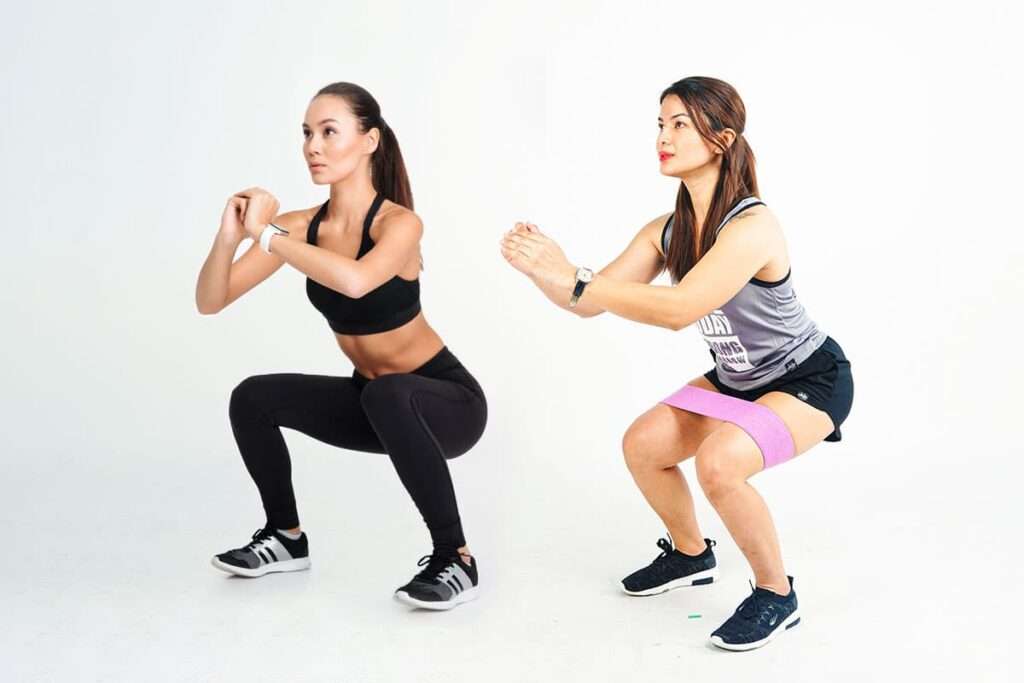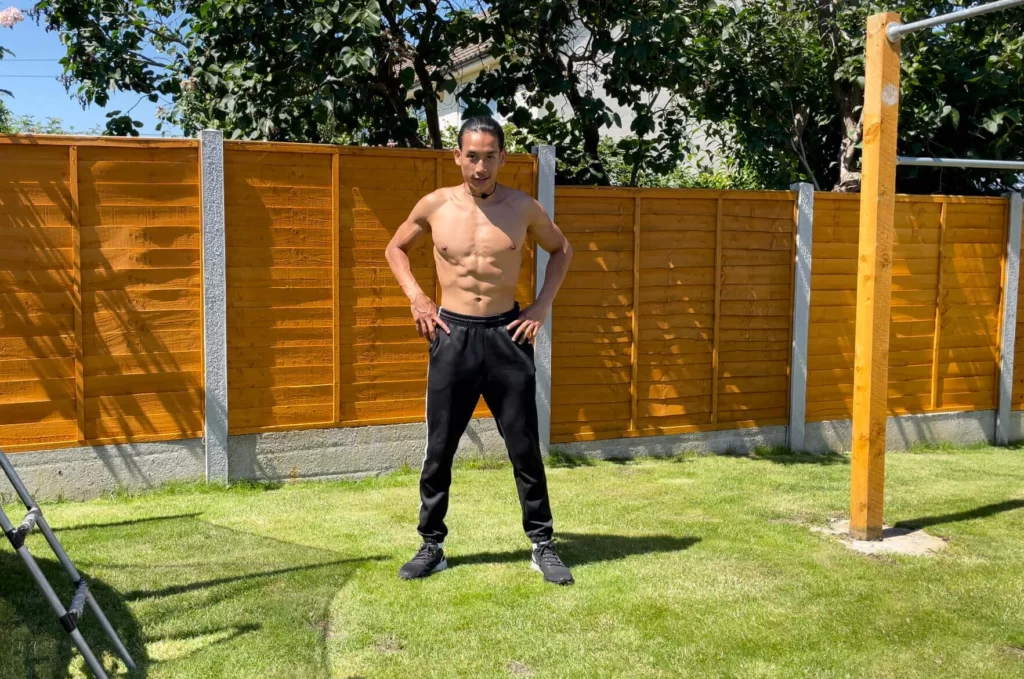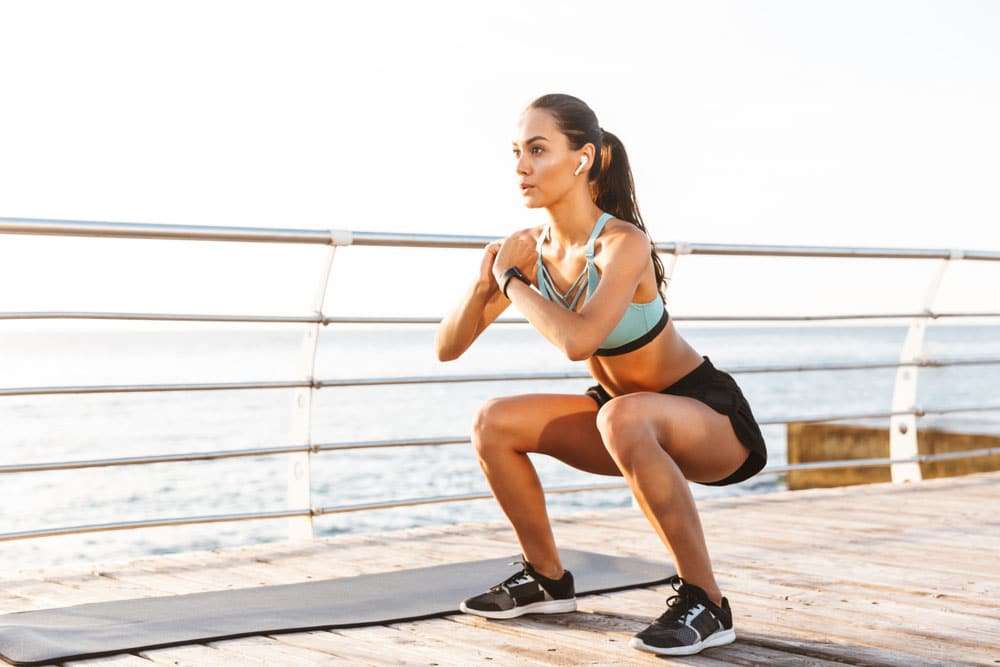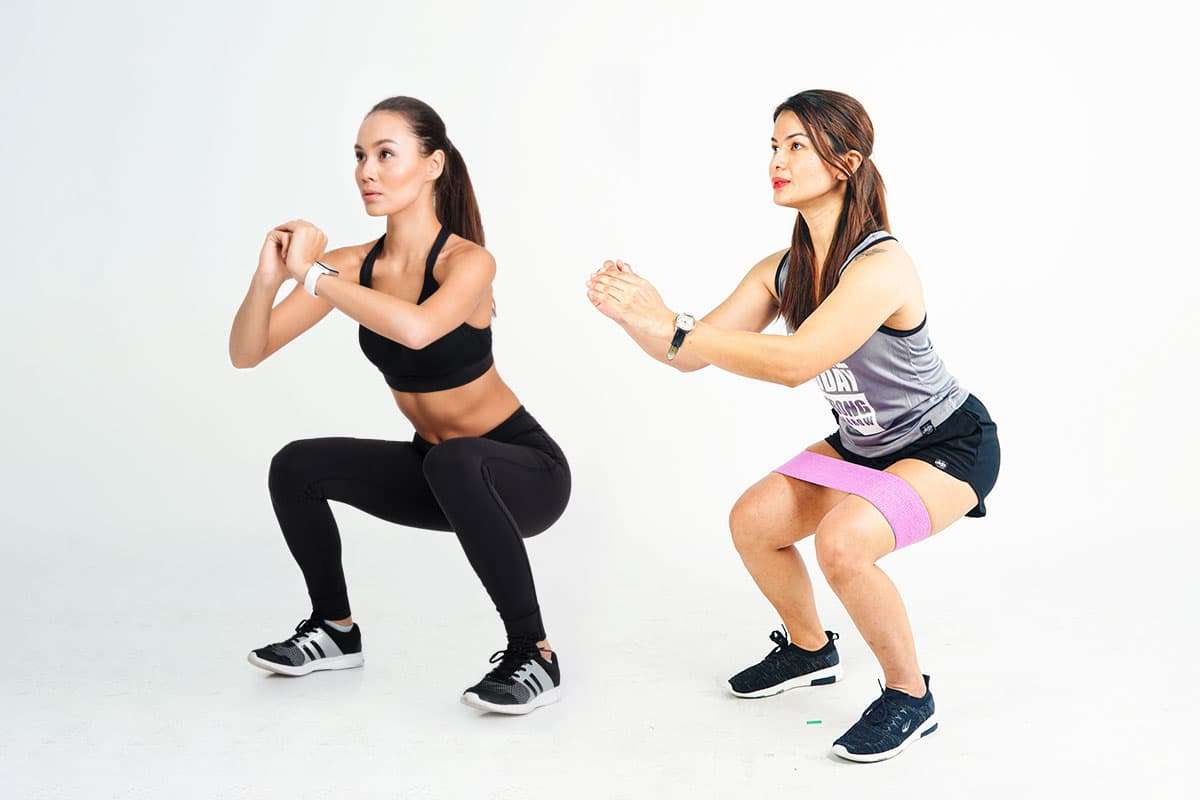If you’re wondering just how many bodyweight squats you should be incorporating into your workout sessions, look no further. This article will provide you with the information you need to maximize the effectiveness of this popular exercise. Discover the recommended number of bodyweight squats per workout session and gain insight into how to tailor this exercise to your fitness goals. Whether you’re a beginner or a seasoned fitness enthusiast, understanding the optimal amount of bodyweight squats can help you achieve the results you’re striving for.
Types of Bodyweight Squats
Basic Squat
The basic squat is the foundation of all squat variations. To perform a basic squat, stand with your feet slightly wider than shoulder-width apart, toes pointing forward. Slowly lower your body by bending your knees and pushing your hips backward, keeping your back straight and chest lifted. Lower yourself until your thighs are parallel to the ground, and then push through your heels to return to the starting position. The basic squat primarily targets your quadriceps, hamstrings, and glutes.
Sumo Squat
The sumo squat is a variation where you have a wider stance with your toes pointing outwards. This squat targets the inner thighs and glutes, providing a different emphasis compared to the basic squat.
Bulgarian Split Squat
The Bulgarian split squat is a unilateral exercise that focuses on each leg individually. To perform this squat, place one foot forward and elevate it on a stable surface behind you. Lower your body until your front thigh is parallel to the ground, and then push through your front heel to return to the starting position. The Bulgarian split squat is excellent for developing strength and stability in the legs.
Pistol Squat
The pistol squat is an advanced squat variation that requires excellent strength and balance. To perform a pistol squat, extend one leg in front of you and squat down on the opposite leg, keeping your back straight and chest lifted. This squat puts a significant emphasis on your quadriceps and requires excellent mobility and strength in the lower body.
Jump Squat
The jump squat adds an explosive element to the standard squat. Begin by performing a basic squat and then explode upwards, jumping off the ground. Land softly and immediately transition into the next repetition. Jump squats are a powerful plyometric exercise that targets your leg muscles and boosts your cardiovascular fitness.
Factors to Consider
Fitness Level
Your fitness level plays a crucial role in determining the appropriate number of bodyweight squats for your workout session. Beginners may start with a lower number of repetitions and gradually increase as their strength and endurance improve. Intermediate and advanced individuals can handle higher volumes, but it’s essential to listen to your body and avoid overtraining.
Overall Goals
Consider your overall fitness goals when determining the number of bodyweight squats to perform. Are you looking to build strength, improve endurance, or increase muscle mass? Your goals will influence the number of repetitions and sets you should aim for in each workout session.
Strength and Endurance
Your current strength and endurance levels are essential in determining how many bodyweight squats you should perform. If you have a strong lower body and good endurance, you can handle higher volumes. However, if you’re not as strong or have lower endurance, it’s best to start with a lower number of repetitions and gradually increase over time.
Recovery Ability
Consider your recovery ability when determining the number of bodyweight squats to perform. If you have a fast recovery time, you may be able to handle higher volumes and more frequent squat sessions. However, if you have a slower recovery time, it’s important to give your muscles ample rest and avoid excessive squatting.

Recommended Repetitions
General Guidelines
There is no one-size-fits-all answer to how many bodyweight squats one should perform in a workout session. However, here are some general guidelines to consider:
- Beginners: Start with 3 sets of 10-12 repetitions, gradually increasing the number of repetitions as your strength improves.
- Intermediate: Aim for 3-4 sets of 12-15 repetitions, challenging yourself with slightly higher weights or intensity.
- Advanced: Perform 4-5 sets of 15-20 repetitions, using added resistance or advanced variations to push your limits.
It’s important to note that these recommendations can vary depending on your fitness level, goals, and recovery ability. Always listen to your body and adjust the number of repetitions accordingly.
Benefits of Bodyweight Squats
Strength and Muscle Tone
Bodyweight squats are an effective way to build strength and muscle tone in the lower body. Squats target major muscle groups, including the quadriceps, hamstrings, and glutes. Consistently performing squats can lead to increased muscle mass, improved strength, and a sculpted lower body.
Improved Mobility and Flexibility
Squats require a good range of motion in the hips, knees, and ankles. Regularly performing squats can help improve mobility and flexibility in these areas, leading to better overall movement and reduced risk of injury.
Enhanced Power and Athletic Performance
The explosive nature of jump squats and other plyometric variations can greatly enhance power and athletic performance. By incorporating these dynamic movements into your training routine, you can improve your ability to generate force and explosiveness, which can be beneficial for activities such as sprinting, jumping, and sports performance.
Fat Burning and Weight Loss
Bodyweight squats are a compound exercise that engages multiple muscle groups simultaneously. These compound movements require a significant amount of energy, making them an effective calorie-burning exercise. By incorporating squats into your routine, you can increase your overall calorie expenditure, helping to promote fat burning and weight loss.

Variations and Modification
Adding Resistance
To increase the challenge of bodyweight squats, you can add resistance in the form of dumbbells, a barbell, or a weighted vest. Holding weights at your sides or across your shoulders can increase the workload on your muscles, leading to greater strength and muscle growth.
Explosive Movements
Incorporating explosive movements such as jump squats or squat jumps can further enhance the intensity and power of your squat workout. Explosive movements require a rapid contraction of the muscles, activating fast-twitch muscle fibers and improving overall power output.
Partial Range of Motion Squats
if you’re struggling with the full range of motion squat, you can modify the exercise by performing partial range of motion squats. This variation allows you to focus on specific portions of the squat and gradually work towards achieving a full range of motion.
Single-Leg Squats
Performing squats on a single leg, also known as pistol squats, can challenge your balance, stability, and strength. Single-leg squats target the same muscles as regular squats but require greater activation and control from each leg individually.
Warm-up and Cool-down
Dynamic Warm-up Exercises
Before starting your bodyweight squat workout, it’s essential to warm up your muscles and prepare them for the upcoming movements. Include dynamic warm-up exercises such as leg swings, hip circles, and walking lunges to increase blood flow, activate the muscles, and improve mobility.
Stretching Exercises
After your squat workout, incorporate stretching exercises to help cool down the muscles and promote flexibility. Focus on stretching the quadriceps, hamstrings, and hip flexors to alleviate tightness and improve range of motion.
Foam Rolling
Using a foam roller before and after your squat workout can help release tension and tightness in the muscles. Roll over the targeted muscle groups, such as the quadriceps, hamstrings, and glutes, to improve muscle recovery and reduce soreness.

Common Mistakes to Avoid
Improper Form
One of the most common mistakes in bodyweight squats is improper form. It’s crucial to maintain a neutral spine, engage the core, and keep the knees tracking in line with the toes. Avoid rounding the back or allowing the knees to cave inwards, as this can lead to poor alignment and potential injury.
Neglecting Full Range of Motion
Performing squats with a limited range of motion can limit the benefits and effectiveness of the exercise. Aim to lower your body until your thighs are parallel to the ground, or even deeper if your mobility allows. This ensures that you are engaging the muscles through their full range and maximizing the benefits of the squat.
Not Listening to Your Body
Pushing yourself to the limit is important for progress, but it’s also important to listen to your body and avoid overtraining or pushing through pain. If something feels off or you experience pain during squats, stop and assess your form or consult with a qualified fitness professional.
Incorporating Bodyweight Squats into Your Fitness Routine
Frequency
The frequency of your bodyweight squat workouts depends on your overall fitness level and goals. Beginners may start with 2-3 squat sessions per week, allowing ample time for recovery. Intermediate and advanced individuals can increase the frequency to 3-4 sessions per week, but it’s important to ensure sufficient rest and recovery between workouts.
Rest Days
Incorporate rest days into your fitness routine to allow your muscles to recover and grow. Avoid consecutive days of squatting to prevent overuse injuries and give your muscles time to rebuild and repair.
Combining with Other Exercises
To create a well-rounded workout routine, consider combining bodyweight squats with other exercises that target different muscle groups. This can include exercises such as push-ups, lunges, planks, or upper body exercises. By incorporating a variety of exercises, you can work your entire body and prevent muscle imbalances.

Progressing While Performing Bodyweight Squats
Increasing Repetitions
As you become more comfortable with bodyweight squats, gradually increase the number of repetitions you perform in each set. This gradual increase in volume will challenge your muscles and promote strength and muscle growth.
Adding Complexity
Once you’ve mastered the basic squat, add complexity to your squat routine by incorporating variations such as sumo squats, Bulgarian split squats, or pistol squats. These variations target different muscle groups and add an extra challenge to your workout.
Changing Tempo
Experiment with changing the tempo of your squats to further challenge your muscles. Slow down the descent, pause at the bottom, or explode upward to add variety and increase the intensity of your squat workout.
Conclusion
Bodyweight squats are a versatile and effective exercise that can be tailored to suit individuals of all fitness levels. By understanding the different types of squats, considering various factors such as fitness level and goals, and incorporating proper warm-up and cool-down routines, you can optimize your bodyweight squat workouts for strength, muscle tone, mobility, and overall fitness. Remember to listen to your body, avoid common mistakes, and progressively challenge yourself to continue making progress and achieving your fitness goals.

